"Being a mother has helped me relinquish control," painter Danielle McKinney tells CULTURED. "My daughter is teaching me what art is all about: imagination and being in the moment."
Motherhood is a broad canvas, but it often demands similar traits as art-making: multi-tasking, patience, and originality, to name a few. For some, finding a balance between the contours of motherhood and a creative practice is inevitable, even galvanizing. For others, that tug-of-war is hard-won. "If an artist is a good person, especially a woman artist who is also a good mother, it somehow makes her art not legitimate," sculptor Rachel Feinstein says below. "Society feels that she spends too much of her focus on her children and not her art."
No matter the approach, the impact of parenthood on an artist reveals a spectrum of adjustments and revelations: a greater attention to detail, more willingness to fail and try again, or a renewed capacity for imaginative interpretation. To celebrate the resilience of artist-mothers everywhere this Mother's Day, CULTURED Editor-in-Chief Sarah Harrelson sat down with McKinney, Feinstein, Camille Henrot, Karon Davis, Loie Hollowell, and Julia Chiang—working moms across disciplines—to hear how this chapter in life has sculpted their perspectives and practices.
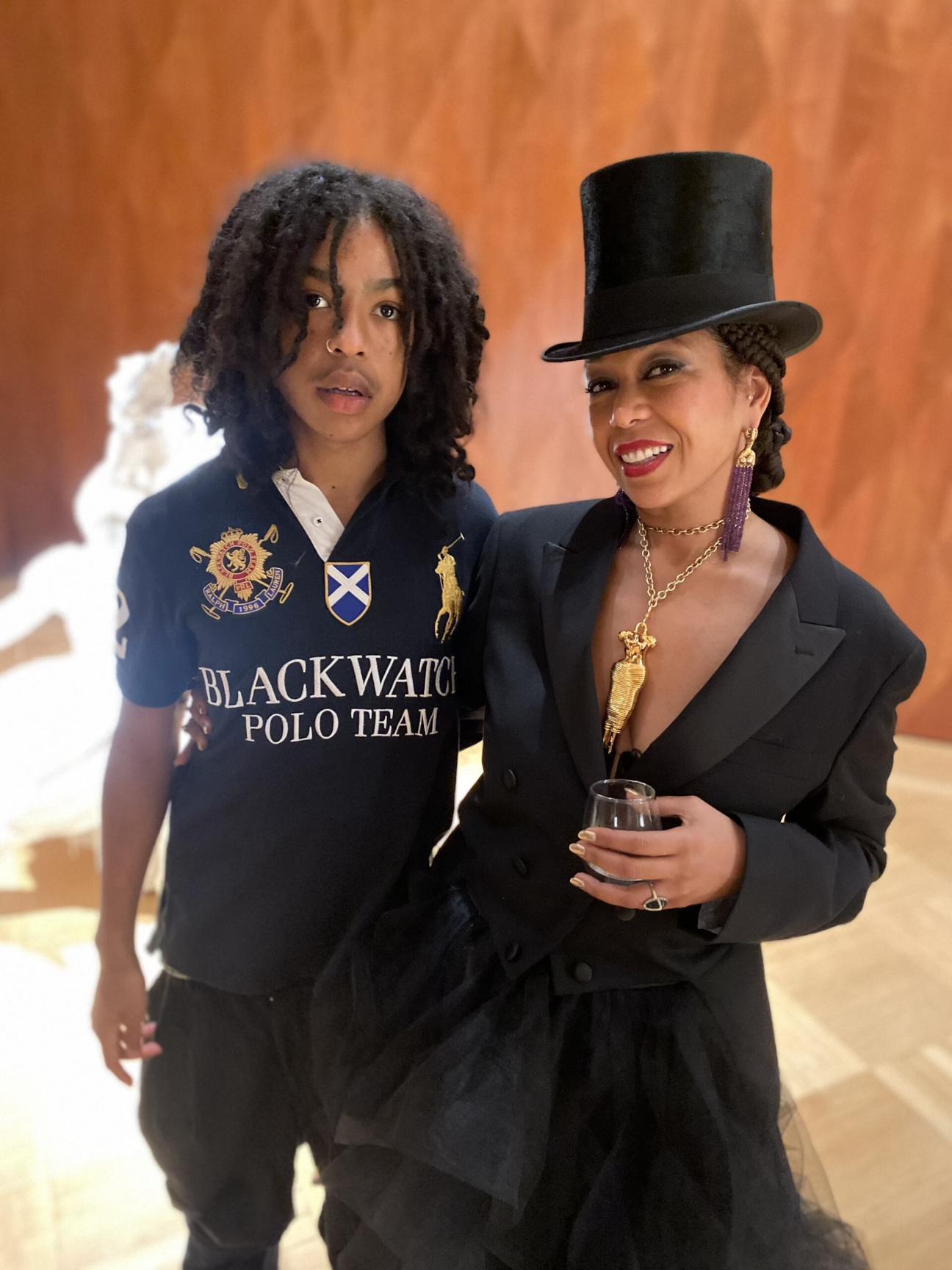
Karon Davis, visual artist & co-founder of the Underground Museum in Los Angeles
How has being a mother informed your art practice in unexpected ways?
Growing a human inside you and birthing them is the most profound, humbling experience you can have. It solidifies your connection to the unknown, the universe, God, or whatever higher power you believe in. Being a mother cracked me open to the deep feelings that I believe guide me in the studio. Your intuition heightens; it has to be a mother and that stays with you.
Has seeing art through your child’s eyes changed any of your long-held opinions?
He is not really interested in art right now.
How have you handled the delicate balance of being a working mother?
I am a single mother. I can't lie, it's tough. There are days, weeks, months I wake at 6 a.m., do the school routine, drop him off, work, pick him up, after school routine, bedtime, work until 2 a.m., repeat. There are no days off. There is no one to roll over to and ask to take the reins because you are deathly ill or exhausted, or sad. You HAVE to push through everyday no matter what. He depends on me to be mom and dad. I am the breadwinner and nurturer. He is worth all of it. As long as he is happy so am I. How do I handle it? With sheer strength, determination, and a good masseuse.

What are the lessons you learned from your mother that you hope to also impart to your child?
My mother had these antidotes, one-liners she would share with me when I was troubled and I find myself repeating to him. One: All they can say is no. Two: Everything will be different in hindsight. Three: Beauty must suffer. Four: Same characters, different players.
What are your most treasured rituals?
A hot, salted bath after the studio and cooking dinner with my son.
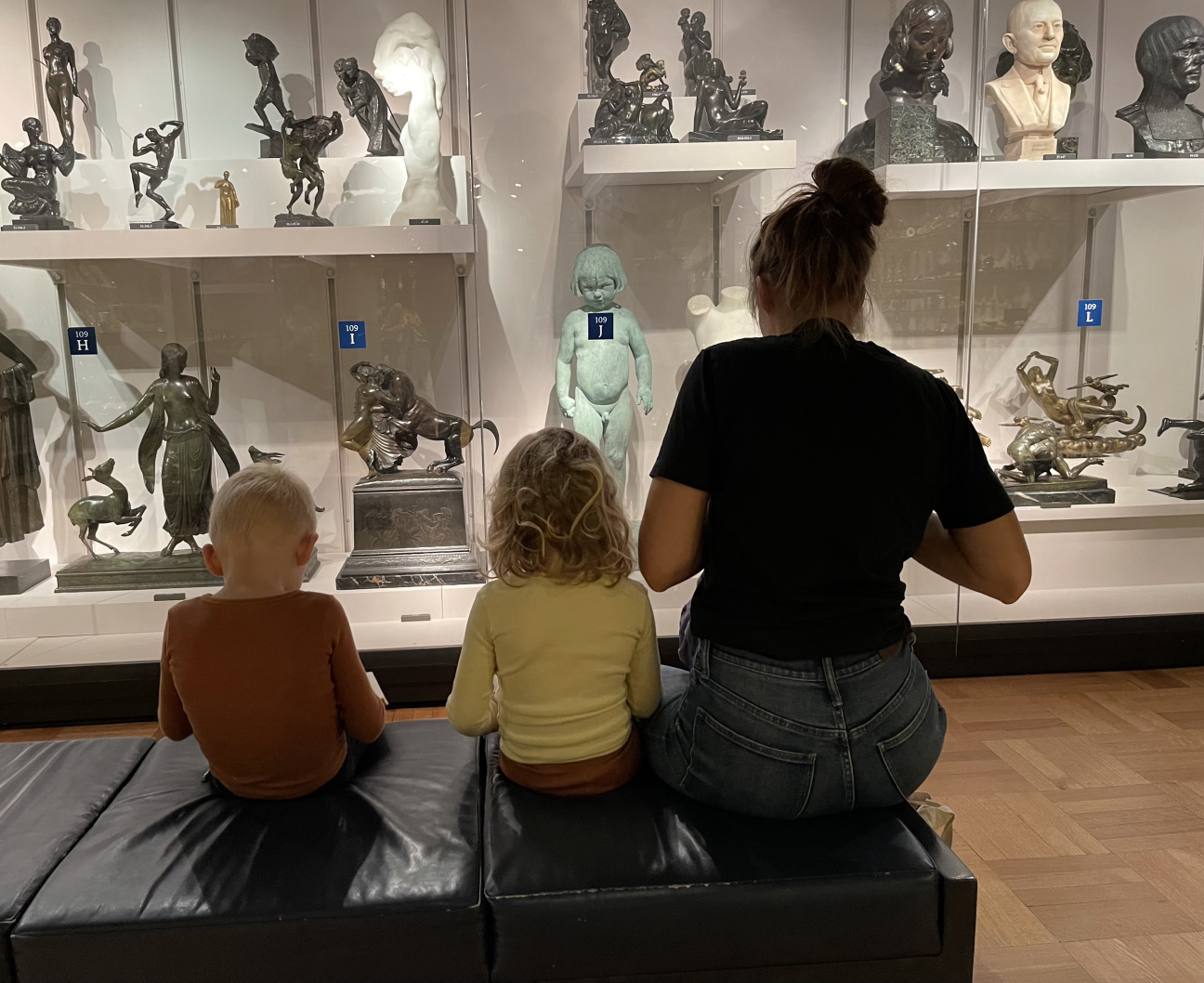
Loie Hollowell, painter
How has being a mother informed your art practice in unexpected ways?
I was a slow painter before I had kids, and I'm still a slow painter, but I've had to limit the amount of time I give myself to go back into a painting and make small changes that in reality would not even be visible to the viewer. I am less picky now about those small changes.
Has seeing art through your child’s eyes changed any of your long-held opinions?
My kids really respond to the colors in my work. I always felt like it's a little bit of a cop-out to make colorful abstractions, but when I saw how much joy they get from looking at color, I became less critical of that element of my practice.
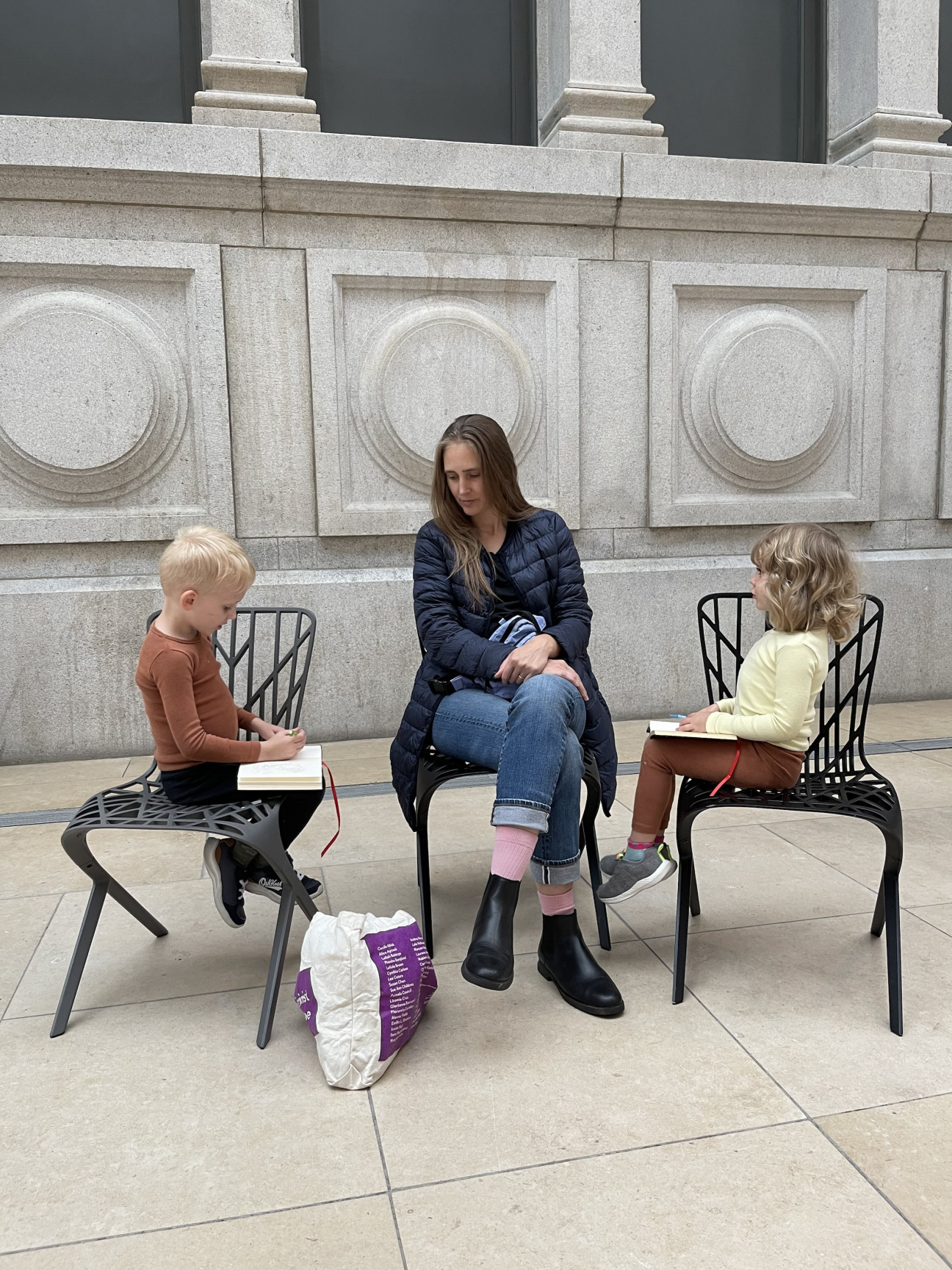
How have you handled the delicate balance of being a working mother?
I've actually found little difference between being an artist with kids and being an artist without kids. Once I started selling my work, and my studio had to start running like a small business, I had already basically implemented a 40-hour work week in which I would paint at the studio during typical working hours. This schedule translated well to public school hours with the help of a nanny.
What are the lessons you learned from your mother that you hope to also impart to your child?
My mom was extremely open with my siblings and I around topics of sexuality and imparted us with body positivity as we became teenagers. I hope to share that element of her parenting with my own kids.
What are your most treasured rituals?
At this moment my most treasured ritual is putting my kids to bed every night: wrestling, reading to them, and rubbing their backs.
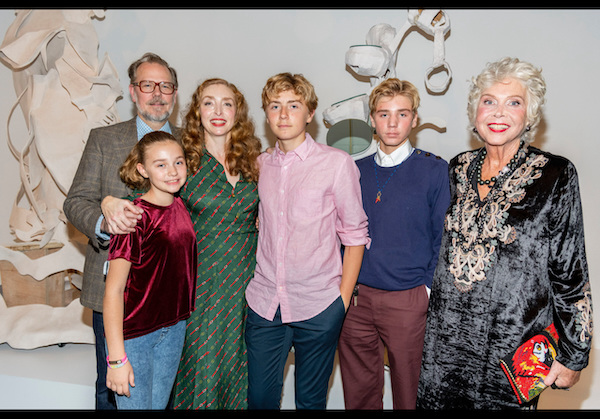
Rachel Feinstein, sculptor
How has being a mother informed your art practice in unexpected ways?
Becoming a mother has made me more aware of the inner workings of life and nature. I came from a loud and loving family of big personalities in Miami, and subtlety was not one of our strong points. Having children has helped slow me down and made me take the time to contemplate and see what quietly is happening around me. Imagine the vision of a mother fox stopping for a moment during the feeding of her cubs to stick her head up and look around and listen to her surroundings. This action is both a protective measure and also one of connection to the outer world of nature. Becoming more present and aware of every feeling and action, allowing for the most delicate feelings to come though my antennae, has helped me become a better artist. I’m not sure if I would have gotten to this level of understanding if I had not had children.
Has seeing art through your child’s eyes changed any of your long-held opinions?
Yes. My three children all have [had] a very strong visual awareness since they were very little. My oldest son started around 4 years old by making these extraordinary Sculpey sculptures of tiny horses, mermaids, and snake people that were anatomically perfect. My younger son began making beautiful oil paintings when he was around 10. We initiated our children into art when they were very young by showing them the power of working with their hands and using their eyes to see things in a new way.
When my children come to my studio, I listen to their insight about what I am working on. My children have the freshest eyes I can ask for. I sometimes get hung up on perfection with a sculpture or painting, and I can find myself in the darkest part of the forest and then can’t see the sky. When one of my sons comes by my studio and takes a look at what I’m working on, they will blithely say about the messy area that I don’t like, “This part is my favorite,” and, “This other part that you keep working on is getting too controlled with no energy,” and they are always right. They are attracted to freedom, and the older I get the harder that is to portray.
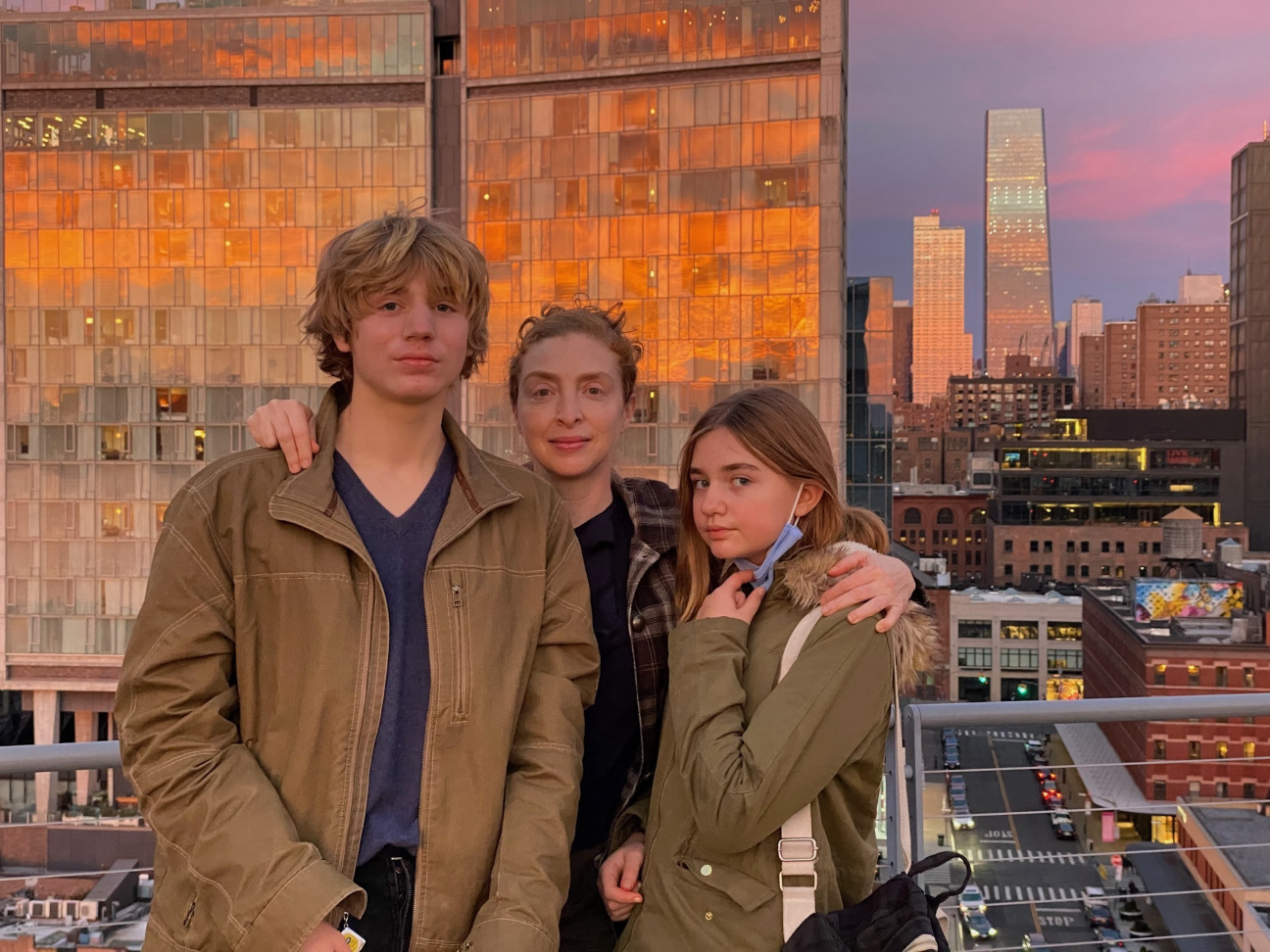
How have you handled the delicate balance of being a working mother?
It is not a delicate balance. I have been quite obsessed with the contradiction of being an artist and a mother since my first child was born in 2003. I believe that the criteria to being a great artist in our current world is completely the opposite to the ones needed to be a great mother. Think of the most famous artists that first come to mind—Picasso, Pollock, de Kooning—and do you immediately then think, Wow, they were all such generous and kind people as well, or great husbands or fathers? No! Part of being lauded as great artists is that they were selfish and only thought of themselves and their art to the exclusion of everyone around them, including their wives and children.
These great artists sometimes sucked the energy and life out of their family and used it in their art to make it better, and art history loved these sad back stories. The real tragedy is that society craves for the great artist to be an awful human because the very monstrousness creates magic in the combination with talent. If an artist is a good person, especially a woman artist who is also a good mother, it somehow makes her art not legitimate. Society feels that she spends too much of her focus on her children and not her art. I struggle with this contradiction as a person who wants to be both a great artist and a great mother and human. I constantly feel guilty about not being a better mother when I am making a big show, or then feel guilty that I am not making great art or spending enough time at my studio when I feel like I am being a great mother and spending time with my kids.
What are the lessons you learned from your mother that you hope to also impart to your child?
My mother passed away one year ago, and her death has affected me in ways that I did not expect. She was my great champion and protector and even at 52 years old, I now feel like a motherless orphan without her. I spoke to her a couple times a day and there is a hole in my daily life now. What my mother, Daria, imparted to me is to never give up. She was so tenacious and strong, as well as unbelievably kooky, warm, and fun. There was no one like her and I’m proud that my kids can see, through the Daria in me, that you need to be yourself no matter how crazy.
What are your most treasured rituals?
Going to museums with my sons, and sitting around the dining table with the whole family making drawings together are my most treasured rituals. Our lives are rooted in making art and also seeing, so it feels deeply connected to do it as a family. We are all solitary beings, as most artists are, but to be doing our own thing within the umbrella of the group/family feels so deep and satisfying. We went to see the "Manet/Degas" show a couple times together, and I learned to see new aspects of these great artists through my son’s eyes. We also really enjoy watching movies together at home. My husband likes to pick out a movie that normally a young person would never be interested in, like Woman in the Dunes, but my kids will actually become riveted. By giving them new and challenging movies and art, I am constantly astonished by their ability to connect.
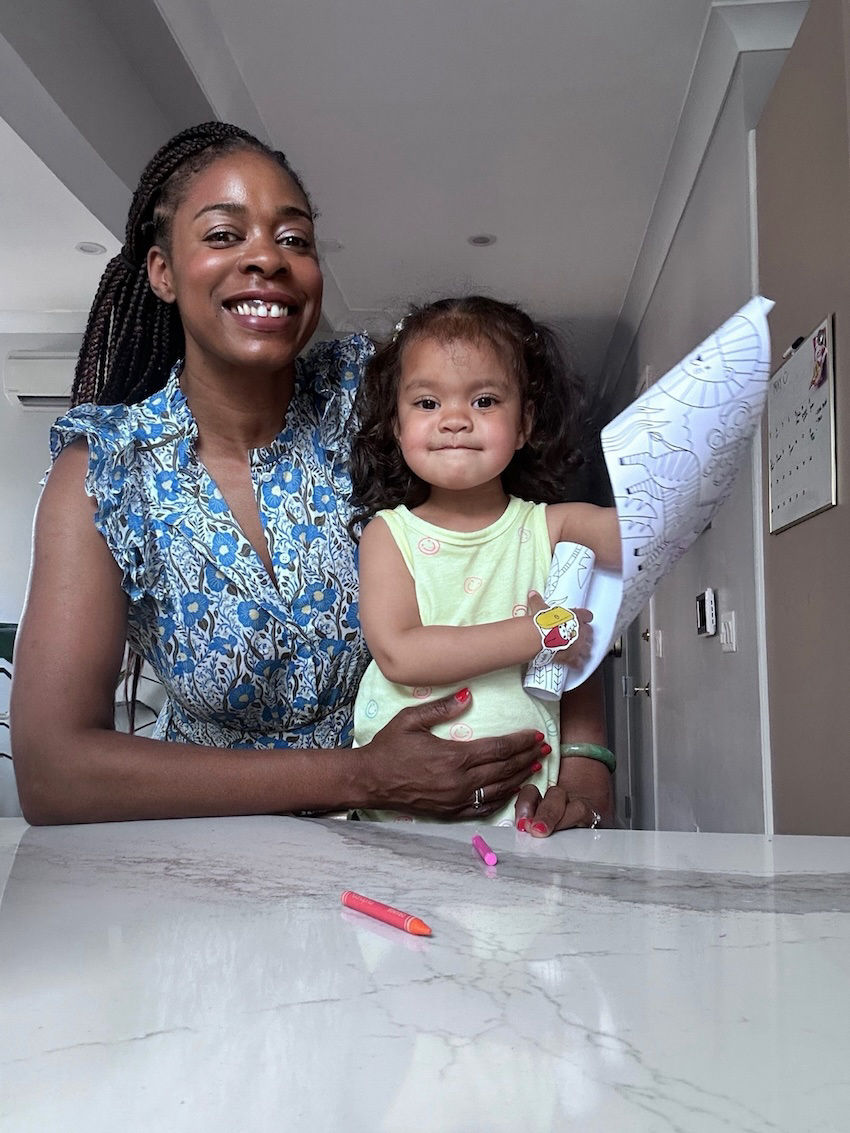
Danielle McKinney, painter
How has being a mother informed your art practice in unexpected ways?
Being a mother has helped me relinquish control. With children, it’s all about the flow. I’ve become less rigid when making work. I focus less on technical and more on feeling. When I make art with my daughter, she mixes all the colors together and doesn’t think twice before application. She is proud of what she makes! “A dinosaur, Mommy,” she says. She is teaching me what art is all about: imagination and being in the moment.
Has seeing art through your child’s eyes changed any of your long-held opinions?
I once believed to be a great painter you must be a realist. Spending time making art with my daughter has shown me that perception varies. She’s taught me that a wiggly bold line on paper is a unicorn, and tape on a window with holes is a ladybug. I love her inner world and the way the ordinary becomes the extraordinary. I apply this knowledge when I make my own work. I allow the mundane to become lucid. I tell myself, “It’s real.”
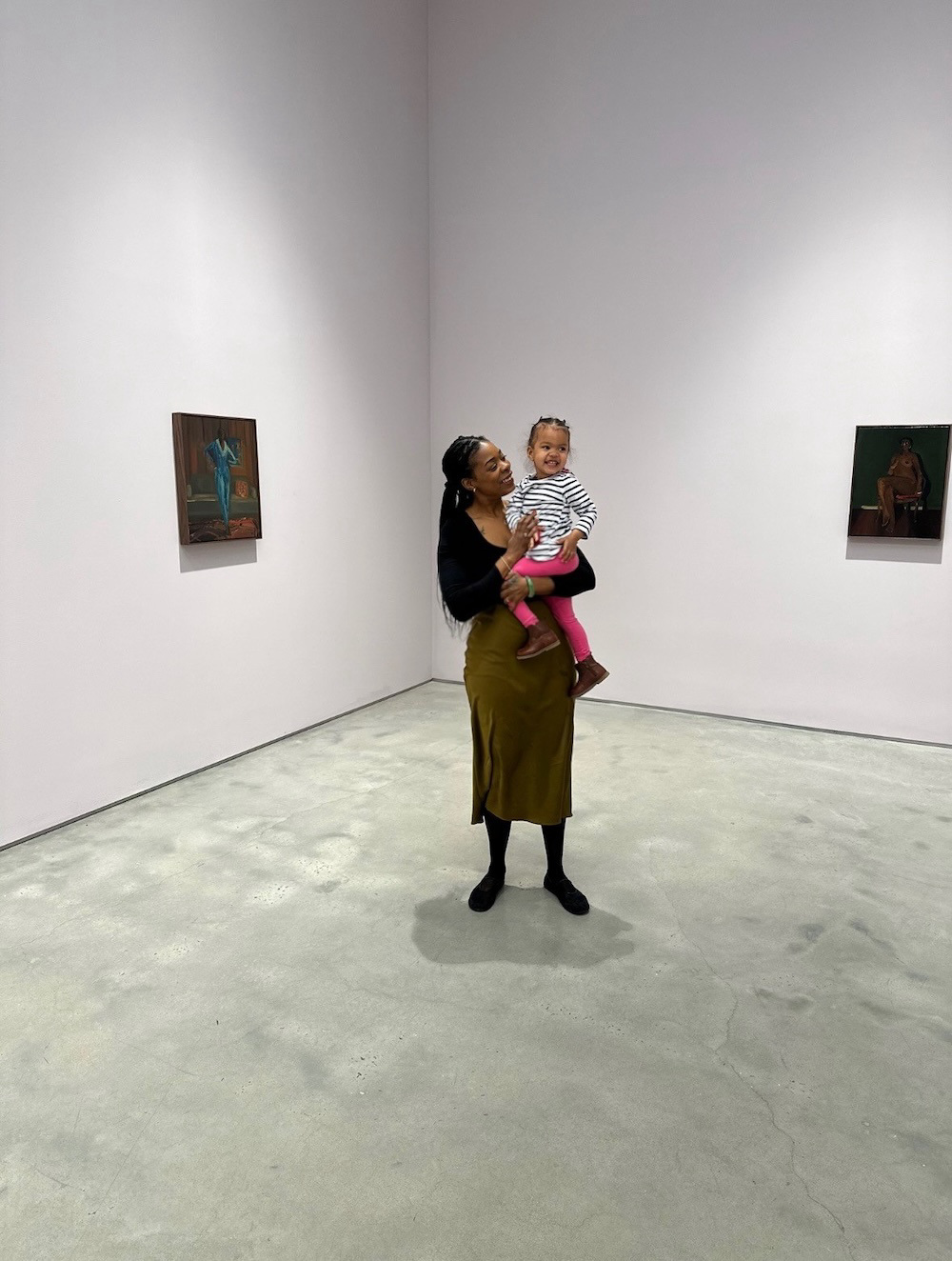
How have you handled the delicate balance of being a working mother?
The first year was intense while finding the balance of being a mother and making work. I'm super thankful for the support of other mothers in the industry that helped me stay grounded and provided keen advice. I learned over time that my artistic practice was a source of joy and that happiness was medicine for my daughter. I also realized playing with my daughter in nature, dancing to music, and long naps is also a part of making art. Ideas for projects come much easier in a relaxed, playful state. So I realized there was no separation from the painter and the mother. Both worlds feed each other, so to say.
What are the lessons you learned from your mother that you hope to also impart to your child?
My mother is my best friend and the best role model a mother could ask for. I have learned so much from my mom. Most importantly, how to think quick on my toes, self-soothe when times are tough, and how to take risks in life. “Go,” she always says, meaning, “Live your life.” I want my daughter to be self-reliant; I want her to know I support her and will always have her back. My mother helped me see that true, lasting joy comes from within. I will keep my promise to give that gift of love to my daughter.
What are your most treasured rituals?
We have so many, lol! We have our own secret language, we dance with our eyes closed, we make each other laugh. My daughter is an old soul, so she has a way to enjoy the quiet moments. We have a ritual of people watching while enjoying ice cream together on a park bench. She is my other half, so rituals are super important. The biggest one we celebrate everyday is when she wakes, we sit and enjoy each other's embrace. It’s a way to show her home is in the heart and mommy will always be “here.”

Camille Henrot, visual artist and author of Mother Tongue
How has being a mother informed your art practice in unexpected ways?
Learning to lose, learning to age. Leaving space for others. Patience. And nothing is ever finished.
Has seeing art through your child’s eyes changed any of your long-held opinions?
Yes. I understand now that sculpture starts in the mouth. We understand shape through the mouth first. Language comes second. The meaning of words fluctuate.
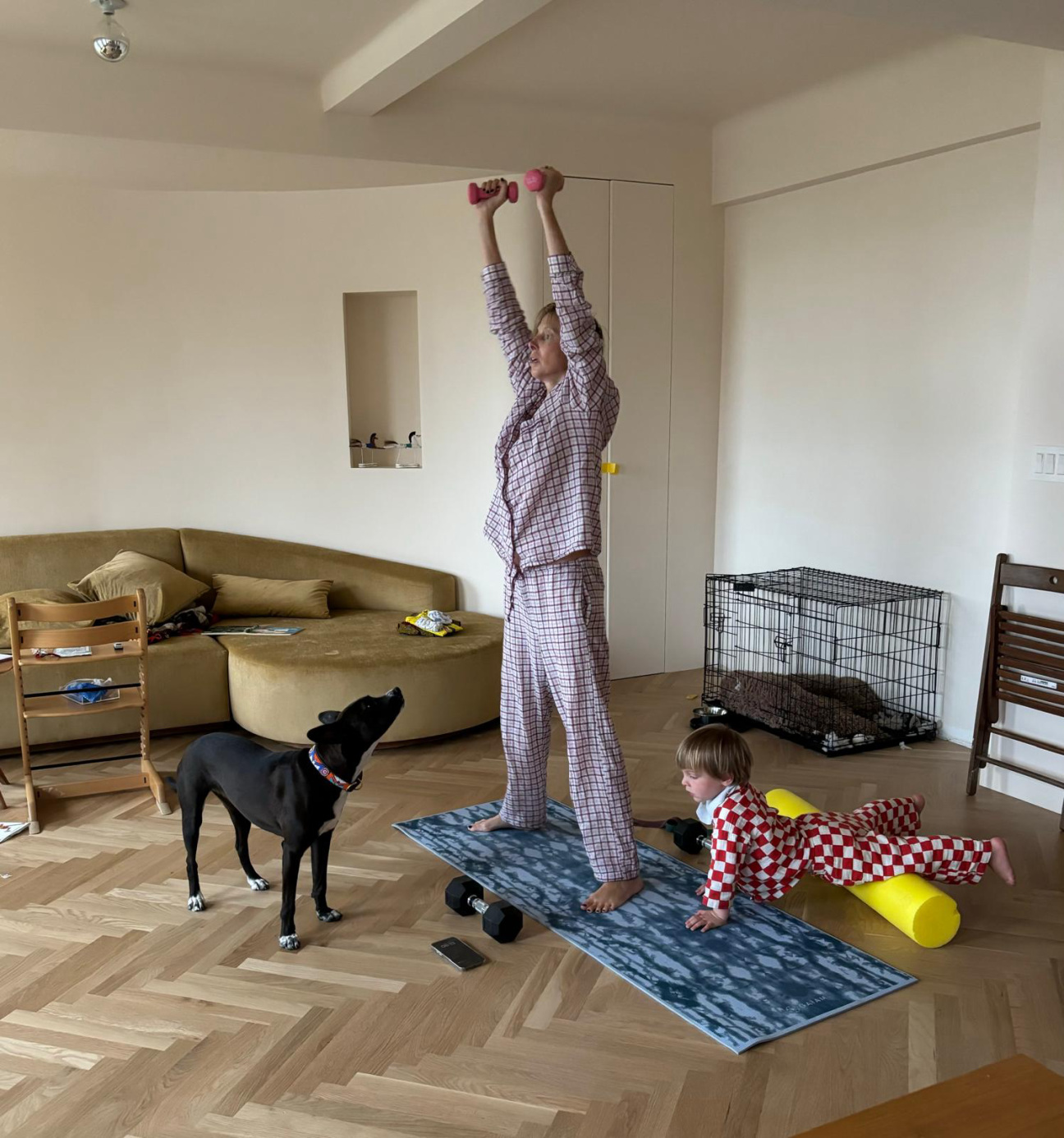
How have you handled the delicate balance of being a working mother?
Not very well.
What are the lessons you learned from your mother that you hope to also impart to your child?
Whatever you do, make sure to have fun.
What are your most treasured rituals?
Morning: pillow fights, gym in the living room and playing fetch with the dog. Evening: reading stories before bedtime.

Julia Chiang, painter and ceramicist
How has being a mother informed your art practice in unexpected ways?
I’m much more willing to try things and just trash them if it’s not working, to experiment and fail and try again. I think because I try to encourage that in my girls and realized I need to embrace that more in myself. Also, kids just push you to see the world differently, to be more open. They help to get me less stuck in my ways.
Has seeing art through your child’s eyes changed any of your long-held opinions?
They definitely have shown me how to focus more on bits of things rather than an overall image or object many times. It’s funny how when we look at art together they often don’t focus on the entire thing in front of them but gravitate toward a specific detail and that’s what it becomes for them. I am drawn to details too, but I love how they can hone in and stay there.
How have you handled the delicate balance of being a working mother?
I think it’s a constant work in progress with some days much messier than others. I think when you’re a parent you never stop parenting and when you’re an artist or a creative, that never stops either. There’s probably a healthy way to turn it all off but so far I have not figured that out. So it’s all going all the time and there’s no real balance; for me it’s more figuring out how to be present in what I’m doing in that moment and trying really hard to make time for as much as I can while still missing things and not finishing things and constantly feeling like I’m dropping the ball but trying my best. And I’m someone that feels so fortunate to have a present partner, supportive help with the kids, and the ability to have a flexible schedule, and I’m not sure if I’ll ever feel balanced!

What are the lessons you learned from your mother that you hope to also impart to your child?
I experienced my mother’s many sacrifices as an immigrant and as a mom and seeing her struggle with not having the access, confidence, or luxury to have certain choices. My mom was really brave in many ways, and I feel so strongly to do whatever I can to give my girls the confidence to take risks, to be brave enough to find their own way. My mom isn’t scared to stand out in a crowd, she’s not concerned with fitting in. As a mom of two girls, I truly hope I can pass that along to them.
What are your most treasured rituals?
I love bedtime with my girls. We read together and sing goofy songs and they have their own funny things they say to us every night before bed. Because of their after-school activities, we’re often racing to get it all done so they can get to sleep at a decent time, but we for sure try to squeeze it all in.










 in your life?
in your life?

